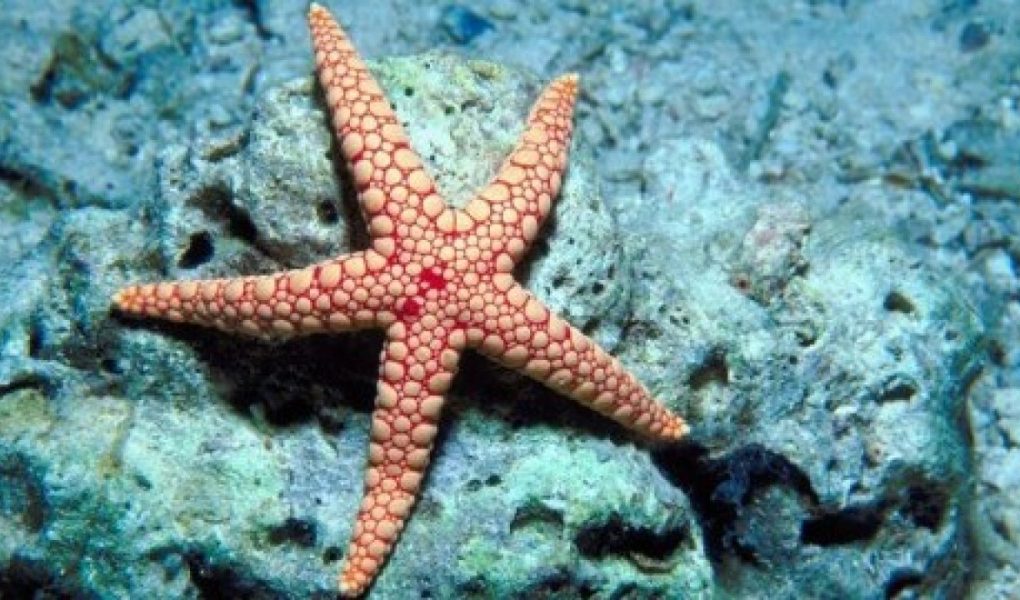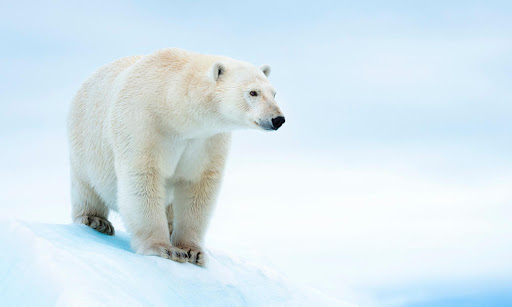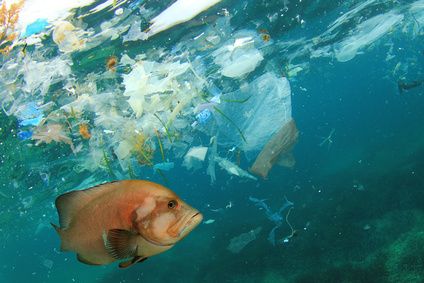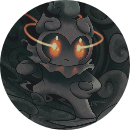The profound .... of Pacific Ocean is the most distinctive feature of the Pacific Ocean A.isolating B.isolation C.isolate D.isolated (Nhờ mng dịch hộ mình , dịch cả câu hỏi cả phần đáp án ạ )

Những câu hỏi liên quan
THE INDIAN OCEANThe Indian Ocean is the world’s third largest ocean, after the Pacific and Atlantic Oceans. It (49) ……….. to the south of Asia, to the west of Australia and Indonesia, and to the east of Africa. Unlike the Atlantic and Pacific, it has no (50) ……….. opening to the north.Therefore, the Suez Canal, (51) ………….. opened in 1869, is a very important shipping route (52) ……….. the Indian Ocean and the Mediterranean Sea.The waters of the Indian Ocean are (53) ………….. calmer than those of th...
Đọc tiếp
THE INDIAN OCEAN
The Indian Ocean is the world’s third largest ocean, after the Pacific and Atlantic Oceans. It (49) ……….. to the south of Asia, to the west of Australia and Indonesia, and to the east of Africa. Unlike the Atlantic and Pacific, it has no (50) ……….. opening to the north.
Therefore, the Suez Canal, (51) ………….. opened in 1869, is a very important shipping route (52) ……….. the Indian Ocean and the Mediterranean Sea.
The waters of the Indian Ocean are (53) ………….. calmer than those of the Pacific and Atlantic Oceans, and are, therefore, easier to travel across. There are about 5,000 islands in the Indian Ocean. (54) …………… such as the Seychelles and Maldives, have beautiful beaches and a warm climate, and now (55) …………… increasing numbers of tourists.
During the winter, cool, dry winds blow over the ocean from the northeast. In summer, the (56) …………… of the wind changes and south-easterly winds blow north from the ocean, bringing (57) …………… rains called “monsoons” to coastal areas. (58) …………… farmers depend on these rains, they can be a problem, often causing serious flooding.
49. A. lies | B. finds | C. puts | D. gets |
50. A. right | B. natural | C. realistic | D. correct |
51. A. when | B. what | C. where | D. which |
52. A. among | B. on | C. between | D. by |
53. A. too | B. much | C. very | D. so |
54. A. Many | B. Each | C. All | D. Any |
55. A. catch | B. lead | C. call | D. attract |
56. A. direction | B. development | C. progress | D. balance |
57. A. thick | B. large | C. heavy | D. high |
58. A. Because | B. Although | C. However | D. Whether |
The Indian Ocean is the worlds third largest ocean, after the Pacific and Atlantic Oceans. It (1) ______ to the south of Asia, to the west of Australia and Indonesia, and to the east of Africa. Unlike the Atlantic and Pacific, it has no (2) ___ opening to the north. Therefore, the Suez Canal, (3) _____ opened in 1869, is a very important shipping route (4) _____ the Indian Ocean and the Mediterranean Sea. The waters of the Indian Ocean are (5) _____ calmer than those of the Pacific and Atlantic...
Đọc tiếp
The Indian Ocean is the world's third largest ocean, after the Pacific and Atlantic Oceans. It (1) ______ to the south of Asia, to the west of Australia and Indonesia, and to the east of Africa. Unlike the Atlantic and Pacific, it has no (2) ___ opening to the north. Therefore, the Suez Canal, (3) _____ opened in 1869, is a very important shipping route (4) _____ the Indian Ocean and the Mediterranean Sea. The waters of the Indian Ocean are (5) _____ calmer than those of the Pacific and Atlantic Oceans, and are, therefore, easier to travel across. There are about 5,000 islands in the Indian Ocean. (6) _____, such as the Seychelles and Maldives, have beautiful beaches and a warm climate, and now (7) _____ increasing numbers of tourists. During the winter, cool, dry winds blow over the ocean from the northeast. In summer, the (8) ____ of the wind changes and south-easterly winds blow north from the ocean, bringing (9) ___ rains called monsoons' to coastal areas. (10) ____ farmers depend on these rains, they can be a problem, often causing serious flooding
.1. A. lies B. finds C. puts D. gets
2. A. right B. natural C. realistic D. correct
3. A. when B. what C. where D. which
4. A. among B. on C. between D. by
5. A. too B. much C. very D. so
6. A. Many B. Each C. All D. Any
7. A. catch B. lead C. call D. attract
8. A. direction B. development C. progress D. balance
9. A. thick B. large C. heavy D. high
10. A. Because B. Although C. However D. Whether
Complete with the correct form of the adjective in parentheses. The Indian Ocean is (a)__________ (small) than the Atlantic Ocean but (b)__________ (big) than the Arctic Ocean. The (c)__________ (large) ocean in the world is the Pacific, and its also the (d)__________ (deep). Theres a place called Point Nemo in the Pacific Ocean, which is the (e)__________ (far) point from land in the whole world. The astronauts in the International Space Station 400 kilometers in space are often (f)__________...
Đọc tiếp
Complete with the correct form of the adjective in parentheses.
The Indian Ocean is (a)__________ (small) than the Atlantic Ocean but (b)__________ (big) than the Arctic Ocean. The (c)__________ (large) ocean in the world is the Pacific, and it's also the (d)__________ (deep). There's a place called Point Nemo in the Pacific Ocean, which is the (e)__________ (far) point from land in the whole world. The astronauts in the International Space Station 400 kilometers in space are often (f)__________ (close) to Point Nemo than any other person on land.
The Indian Ocean is (a)_smaller_ (small) than the Atlantic Ocean but (b)__bigger__ (big) than the Arctic Ocean. The (c)__largest_ (large) ocean in the world is the Pacific, and it's also the (d)_deepest_ (deep). There's a place called Point Nemo in the Pacific Ocean, which is the (e)_furthest_ (far) point from land in the whole world. The astronauts in the International Space Station 400 kilometers in space are often (f)_closest_ (close) to Point Nemo than any other person on land.
Đúng 0
Bình luận (0)
Complete with the correct form of the adjective in parentheses.
The Indian Ocean is (a)__smaller________ (small) than the Atlantic Ocean but (b)_____bigger_____ (big) than the Arctic Ocean. The (c)____largest______ (large) ocean in the world is the Pacific, and it's also the (d)___deepest_______ (deep). There's a place called Point Nemo in the Pacific Ocean, which is the (e)____farthest______ (far) point from land in the whole world. The astronauts in the International Space Station 400 kilometers in space are often (f)___closer_______ (close) to Point Nemo than any other person on land.
Đúng 0
Bình luận (0)
Which ocean is the largest on our planet? – B: Pacific Ocean. It’s a … of cake
1. Where is the Bermuda Triangle? A. In the Atlantic Ocean B. In the Arctic Ocean C. In the Pacific Ocean D. In the Southern Ocean2. What is NOT a way to protect the ocean? A. Keeping the plastics out of the sea. B. Asking people to keep the ocean clean together. C. Recycling most everything. D. Always throwing plastics into the ocean.3. There are five oceans on Earth: the Pacific, the Atlantic, the Indian, the Arctic and ___ . A. the South B. the Southern C. the Western D. the Northern4. Choose...
Đọc tiếp
1. Where is the Bermuda Triangle?
A. In the Atlantic Ocean
B. In the Arctic Ocean
C. In the Pacific Ocean
D. In the Southern Ocean2. What is NOT a way to protect the ocean?
A. Keeping the plastics out of the sea.
B. Asking people to keep the ocean clean together.
C. Recycling most everything.
D. Always throwing plastics into the ocean.3. There are five oceans on Earth: the Pacific, the Atlantic, the Indian, the Arctic and ___ .
A. the South
B. the Southern
C. the Western
D. the Northern4. Choose the best answer
A. Because of marine debris, lots of animals get entangled, trapped or killed.
B. Thanks to marine debris, animals in the ocean can have a better life.
C. Marine debris is human-created waste that has been discharged into the marine environment, the land or the atmosphere.
D. Marine debris only affects animals in the ocean. It doesn't have any negative impacts on people.5. What animal is it?

A. Jellyfish
B. Sea turtle
C. Octopus
D. Starfish6. On ___, the Southern Ocean has been officially recognized as one of the oceans on Earth.
A. 8 June 2021
B. 8 July 2021
C. 8 June 2020
D. 8 July 20207. It's ___. It lives in the Arctic.

A. an Arctic wolf
B. an Arctic fox
C. a polar bear
D. a panda8. Which species are in danger of extinction?
A. Sea lion, Tuna, Blue whales
B. Hawksbill turtle, Salmon, Sea lion
C. Sea lion, White shark, Tuna
D. Fin whale, Sea lion, Hector's dolphin9. Choose the sentence that best describes the picture.

A. The fish looks very happy because there is a variety of waste around him.
B. There is a variety of waste in the sea, which makes the fish look unhappy.
C. The fish looks satisfied with the debris environment.
D. The sea is very clean without waste.10. Don't throw plastics into the sea. Remember to carry a ___ bottle when going shopping, and ___ whenever possible!
A. reusable - renew
B. reusable - recycle
C. recycle - renew
D. recycle - reusable
1. Where is the Bermuda Triangle?
A. In the Atlantic Ocean
B. In the Arctic Ocean
C. In the Pacific Ocean
D. In the Southern Ocean
2. What is NOT a way to protect the ocean?
A. Keeping the plastics out of the sea.
B. Asking people to keep the ocean clean together.
C. Recycling most everything.
D. Always throwing plastics into the ocean.
3. There are five oceans on Earth: the Pacific, the Atlantic, the Indian, the Arctic and ___ .
A. the South
B. the Southern
C. the Western
D. the Northern
4. Choose the best answer
A. Because of marine debris, lots of animals get entangled, trapped or killed.
B. Thanks to marine debris, animals in the ocean can have a better life.
C. Marine debris is human-created waste that has been discharged into the marine environment, the land or the atmosphere.
D. Marine debris only affects animals in the ocean. It doesn't have any negative impacts on people.5. What animal is it?

A. Jellyfish
B. Sea turtle
C. Octopus
D. Starfish6. On ___, the Southern Ocean has been officially recognized as one of the oceans on Earth.
A. 8 June 2021
B. 8 July 2021
C. 8 June 2020
D. 8 July 20207. It's ___. It lives in the Arctic.

A. an Arctic wolf
B. an Arctic fox
C. a polar bear
D. a panda8. Which species are in danger of extinction?
A. Sea lion, Tuna, Blue whales
B. Hawksbill turtle, Salmon, Sea lion
C. Sea lion, White shark, Tuna
D. Fin whale, Sea lion, Hector's dolphin
9. Choose the sentence that best describes the picture.

A. The fish looks very happy because there is a variety of waste around him.
B. There is a variety of waste in the sea, which makes the fish look unhappy.
C. The fish looks satisfied with the debris environment.
D. The sea is very clean without waste.
10. Don't throw plastics into the sea. Remember to carry a ___ bottle when going shopping, and ___ whenever possible!
A. reusable - renew
B. reusable - recycle
C. recycle - renew
D. recycle - reusable
Đúng 1
Bình luận (0)
Choose the best answer so that the meaning stays the same.
What is the depth of the Pacific Ocean?
Xem thêm câu trả lời
On the floor of the Pacific Ocean is hundreds of flat-tipped mountains more than a mile beneath sea level
A. more than
B. On
C. beneath sea level
D. is hundreds of
Chọn D
Kiến thức: Đảo ngữ - sự hòa hợp chủ ngữ & động từ
Giải thích:
Cấu trúc đảo ngữ với trạng từ chỉ nơi chốn: Giới từ + danh từ chỉ nơi chốn + động từ chính + chủ ngữ.
hundreds of flat-tipped mountains => chủ ngữ số nhiều => nên phải là "are"
Sửa: is hundreds of => are hundreds of
Tạm dịch: Trên thềm của Thái Bình Dương là hàng trăm ngọn núi đỉnh bằng phẳng hơn một dặm bên dưới bên dưới mực nước biển
Đúng 0
Bình luận (0)
66.what is the depth of pacific ocean.
How...........
66 . What is the depth of pacific ocean ?
=> Ho deep is the pacific ocean ?
Đúng 0
Bình luận (0)
Câu VI. Đọc đoạn văn sau và trả lời các câu hỏi. (0,8 điểm)A magnitude-9.0 earthquake, also known as the Great East Japan Earthquake, struck in the Pacific Ocean off the northeast coast of Japans Honshu island on March 11, 2011. It was the most powerful earthquake ever to hit Japan and the fourth largest ever recorded in the world. The earthquake triggered a massive tsunami that flooded more than 200 square miles of Coastal land. Waves estimated to be as high as 38 meters, the height of a 12-sto...
Đọc tiếp
Câu VI. Đọc đoạn văn sau và trả lời các câu hỏi. (0,8 điểm)
A magnitude-9.0 earthquake, also known as the Great East Japan Earthquake, struck in the Pacific Ocean off the northeast coast of Japan's Honshu island on March 11, 2011. It was the most powerful earthquake ever to hit Japan and the fourth largest ever recorded in the world. The earthquake triggered a massive tsunami that flooded more than 200 square miles of Coastal land. Waves estimated to be as high as 38 meters, the height of a 12-story building, tore apart Coastal towns and villages, carrying ships inland as thousands of homes were flattened, then washed tons of debris and vehicles back out to sea. Damage to the reactors at TEPCO's Fukushima Daiichi Nuclear Power Plant then caused a third disaster, contaminating a wide area that still forces nearly 100,000 residents to live as evacuees. Tsunami waves also swept across the Pacific, causing damage or disruptions in Hawaii, California, Oregon, Washington and British Columbia.
Casualties from the earthquake and tsunami in Japan may be 30,000 and close to 500,000 people were forced to evacuate. More than 125,000 buildings have been washed away or seriously damaged; property damage is estimated to be more than $310 billion.
1. Where did the earthquake strike?
2. What caused the tsunami?
3. How many people were evacuated?
4. Were there four or five regions affected by the tsunami?
1 In the Pacific Ocean off the northeast coast of Japan's Honshu island
2 The Great East Japan Earthquake
3 nearly 100,000
4 Five regions
Đúng 3
Bình luận (1)
Xác đinh lỗi trong bài(1) Scientists have been studying an ocean event who is the cause of drastic changes in weather around the world. (2) This event is an increase in the temperature of the Pacific Ocean that appear around Christmas off the coast of Peru. (3) Hence, the Peruvian fishermen whom first noticed it named it El Nino, a name that means the Christ child in Spanish. (4) The causes of this rise in ocean temperatures are unknown, but its effects are obvious and devastating.• (5) One of E...
Đọc tiếp
Xác đinh lỗi trong bài
(1) Scientists have been studying an ocean event who is the cause of drastic changes in weather around the world. (2) This event is an increase in the temperature of the Pacific Ocean that appear around Christmas off the coast of Peru. (3) Hence, the Peruvian fishermen whom first noticed it named it El Nino, a name that means "the Christ child" in Spanish. (4) The causes of this rise in ocean temperatures are unknown, but its effects are obvious and devastating.
• (5) One of El Nino's far-reaching effects is that it threatens Peru's vital anchovy harvest, which could mean higher prices for food. (6) The warm water of El Nino keeps the cold water which provides anchovies with food down at the bottom of the ocean. (7) Anchovies are the primary source of fish meal which is the main ingredient in livestock and chicken feed."
(8) In addition, guano from birds who feed off the anchovies is a major source of fertilizer for farmers. (9) As a result of decreasing supplies of anchovies and guano, the prices of chicken feed, livestock feed, and fertilizer rise. (10) This causes farmers, who they must pay more for feed and fertilizer, to charge more for the food they produces. (11) The prices of eggs, meat, and even bread have soared as a result of El Ninos in past years.
(1) Scientists have been studying an ocean event who => which is the cause of drastic changes in weather around the world. (2) This event is an increase in the temperature of the Pacific Ocean that appear =>appears around Christmas off the coast of Peru. (3) Hence, the Peruvian fishermen whom => who first noticed it named it El Nino, a name that means "the Christ child" in Spanish. (4) The causes of this rise in ocean temperatures are unknown, but its effects are obvious and devastating.
• (5) One of El Nino's far-reaching effects is that it threatens Peru's vital anchovy harvest, which could mean higher prices for food. (6) The warm water of El Nino keeps the cold water which provides anchovies with food down at the bottom of the ocean. (7) Anchovies are the primary source of fish meal, which is the main ingredient in livestock and chicken feed."
(8) In addition, guano from birds who => that feed off the anchovies is a major source of fertilizer for farmers. (9) As a result of decreasing supplies of anchovies and guano, the prices of chicken feed, livestock feed, and fertilizer rise. (10) This causes farmers, who they => who must pay more for feed and fertilizer, to charge more for the food they produces. (11) The prices of eggs, meat, and even bread have soared as a result of El Ninos in past years.
Đúng 2
Bình luận (0)


































